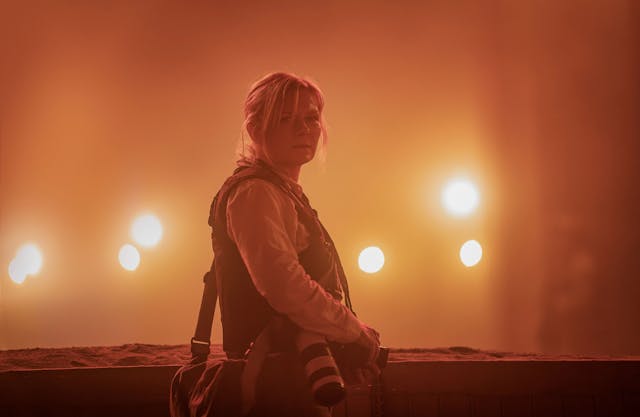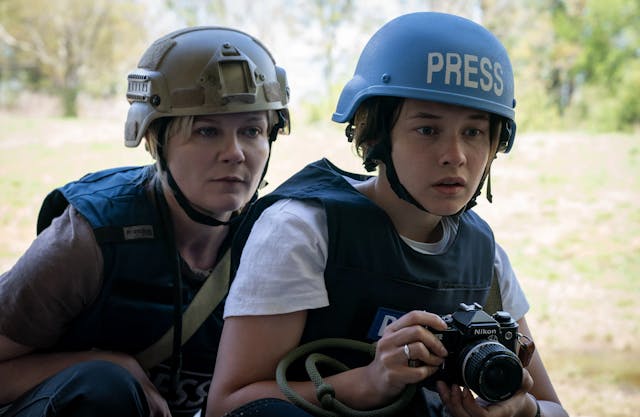"Skinamarink": Some Classic Horror Movies Behind the Low Budget Hit

Little Kevin faces the dark in Skinamarink / Photo courtesy of IFC Films
There is a new phenomenon in horror, and its name is Skinamarink. Kyle Edward Ball’s movie is both an audiovisual nightmare and a commercial success. Budgeted at 15 thousand dollars and shot with loaned equipment, the movie made nearly two million dollars in a three-week theatrical run. Shudder premiered it for streaming in early February, taking its scares to their place of origin: the home.
It's nighttime at a generic American home. A family goes through the motions of their bedtime rituals, but something's not quite right. Little Kevin (Lucas Paul) had a sleepwalking incident recently. At least, that's what slightly older sister Kaylee (Dali Rose Tretault) says. Strange things begin to happen. Doors, windows, and even a toilet disappear. Mom and Dad, too, after falling into a sort of trance. A mysterious voice can be heard around the house, commanding the kids to do things or bear the consequences.
It’s a meager plot, but Ball distinguishes his work by making it boldly low-fi. Basic cuts, slow camera movements, and tricks of perspective create nightmarish illusions. Darkness goes a long way into disturbing the audience, letting their imagination do the heavy lifting.
Skinamarink pushes the power of suggestion to the breaking point. You have to fill in the blanks, but it might be all blanks. You stare at a dark wall for minutes, watching a spot from which a distorted voice emanates. Or does it? Perhaps there is no spot at all. It might be just electronic noise provoked by low light. You desperately want to see something in the pit of darkness. Anything. Whatever.
Ball’s grueling test of audience complicity is a make-or-break gambit. You may be scared witless or bored to bits. The 1 hour and forty minutes long movie runs at molasses speed. It is a love-it-or-hate sensation, capable of scaring people away from naming their kids Kevin or Kaylee. Also, it might lead young horror fans to the many other films and filmmakers that inform Skinamarink’s dark vision. You can start here.
Meshes of the Afternoon (Maya Deren and Alexander Hammid, 1949):
This touchstone of the mid-XX century avant-garde is a creepy, dream-like fantasy that would give Luis Buñuel and Salvador Dalí a run for their money. Maya Deren and her husband, Alexander Hammid, turn their Los Angeles home into a dreamscape where a woman multiplies herself as she follows a dark figure with a mirror for a face. A man comes up, and murderous impulses take over. The full 14-minute-long movie is available to stream on YouTube. As far as American indie movies go, Deren is Mother.
The Haunting (Robert Wise, 1963)
Shirley Jackson published her classic horror novel The Haunting of Hill House in 1959. Four years later, Robert Wise served a classic adaptation with Julie Harris in the leading role as a brittle, sheltered young woman invited to investigate paranormal activity in an old New England mansion. The ornate production design is far from Skinamarik's blank suburbia but shares its claustrophobic fascination with menacing spaces. It's a delicious throwback to when big studios would pour money into horror. Not to be confused with the dismal 1999 remake.
In 2018 Netflix produced an original series by Mike Flanagan, which started a run of remakes in mini-series format with the 2020s The Haunting of Bly Manor (a new take on The Innocents, Jack Clayton’s 1961 adaptation of Henry James’ The Turn of the Screw). Next comes The Fall of the House of Usher, based on the same Edgard Allan Poe short story that served as the basis for the Vincent Price-led classic in 1960, one of the best Roger Corman movies. Flanagans updates the story of cursed rich people, turning the Ushers into an extreme carton of the Slackers, the infamous pharmaceutical moguls behind the opioid crisis. Crime movies plus horror tropes? Yes, please!
The Amityville Horror (Stuart Rosenberg, 1979)
Skinamarink’s formulation of parental figures as alternatively useless or menacing connects it with this late seventies sensation based on an allegedly true story. James Brolin and Margot Kidder are newlyweds buying a colonial suburban house for a song. Sure, the previous owner killed his family there, but are you aware of property prices in upstate New York? Before you know it, Dad is possessed by evil ghosts. Will history repeat itself?
Poltergeist (Tobe Hooper, 1982)
The ultimate '80s haunted house thriller finds Craig T. Nelson and JoBeth Williams moving their lovely family into a new suburban development. Everything is great until strange voices emanate from a static-filled TV screen and enrapture little Carol Anne (Heather O'Rourke). Recognizing they are helpless against escalating inexplicable phenomena, they enlist the help of a cadre of paranormal investigators led by the small but powerful Tangina (Zelda Rubinstein).
The Blair Witch Project (Daniel Myrick & Eduardo Sanchez, 1999)
Three film students (Heather Donahue, Joshua Leonard, and Michael Williams) set out to the Maryland forests to film a documentary about the mythical Blair Witch and disappear without a trace. The movie premiered in Sundance 1999 as an edit of the footage they left behind. They were actors, and this is a sneaky fiction posing as a documentary. To this day, people still fall for the ruse. The rough-assembly look and disregard for traditional framing and mise-en-scene anticipate Skinamarink - and its rags-to-riches box-office trajectory. Artisan bought the movie after its premiere at the 1999 Sundance Film Festival for 1.1 million dollars, and it cashed in 250 million at the box office. It's the success low budget movies dream of.
Inland Empire (David Lynch, 2006)
David Lynch is our best director of stealth horror. His influence is pervasive in Skinamarink, especially in the expressive use of degraded video and muddled images. With the advent of digital video, Lynch abandoned film and embraced the new technology to make this nightmarish, experimental narrative mosaic. Inland Empire rests on a flimsy plot about a cursed movie. Laura Dern plays an actress recruited to try to complete it. Things get weird fast. Lynch shot himself with a “prosumer” camera - a Sony PDR-150 - and later blew up the results to 35 mm film. The resulting image is anathema to the cult of ultra-sharpness in current digital video standards, with James Cameron as his poster boy.
Back in Skinamarink, every time little Kevin walked down a dark corridor, I expected him to bump into a chorus line of whores doing the Locomotion - you must see Inland Empire! -. In March 2023, the Criterion Collection released a Blu-ray version of a new HD master made from a 4K restoration supervised by Lynch, with re-mastered audio. You have never seen better intentionally muddy video footage!
Paranormal Activity (Oren Pelli, 2007)
Another Do-It-Yourself sensation that, unlike The Blair Witch Project, managed to jumpstart a successful franchise. The seventh film in the series opened in 2021, but the first one is still the best. Katie Featherston and Micah Sloat play a young couple moving into their first home. Soon, strange manifestations disturb the night, and pro videographer Micah gets to work. He deploys home video, prosumer, surveillance, and night vision cameras to catch the evil presence in flagrante delicto. Good luck with that, buddy.
Assorted public domain vintage cartoons
Whatever music you hear in Skinamarink comes from a TV set blasting old cartoons in the living room where Kevin and his sister take refuge from the evil upstairs. You can glimpse bits from Max Fleisher's works or vintage Merry Melodies at different times. Ball credits archive.org for providing the now public-domain cartoons. It is a very cool gesture of cross-promotion that should increase awareness of this valuable resource. The Internet Archive is a non-profit site that houses and provides access to millions of free books, movies, software, pictures, and old websites. Go there and get lost in a veritable rabbit hole of media.
Bite Size Nightmares
Ball cut his teeth shooting this collection of videos based on actual nightmares people would submit for his consideration. Thirty-nine reside on this YouTube channel. Length varies from a minute to 3-plus hours - mischievously, the longest ones are branded as media “to fall asleep to.” The atmospheric visual and sound design reveal these experimental clips as a test run of the ideas that build Skinamarink. If you liked the movie, these are must-see videos.
Want to get an email when we publish new content?
Subscribe today



























